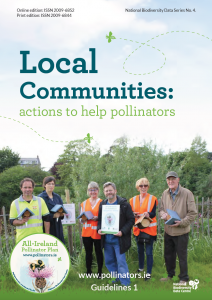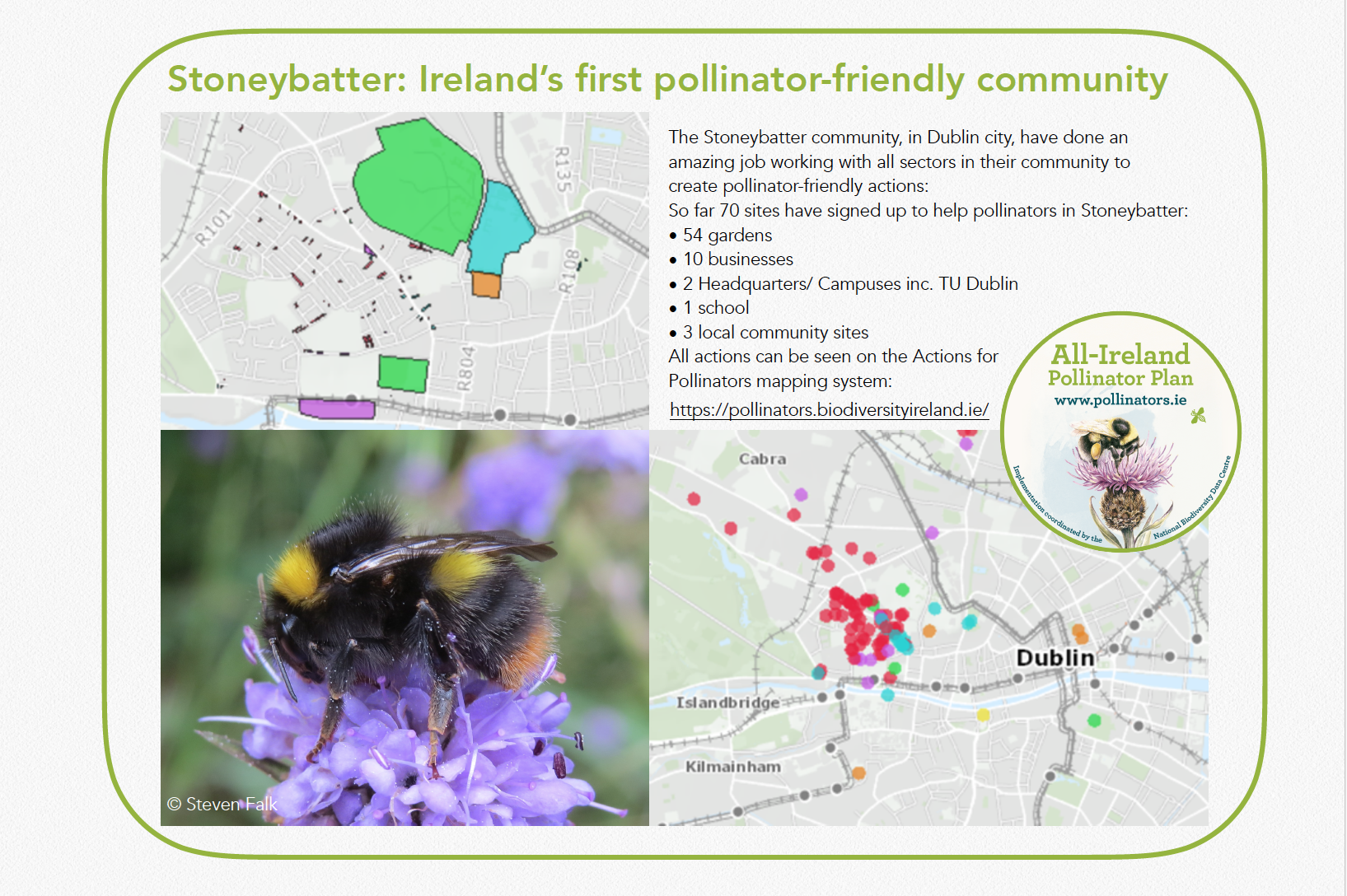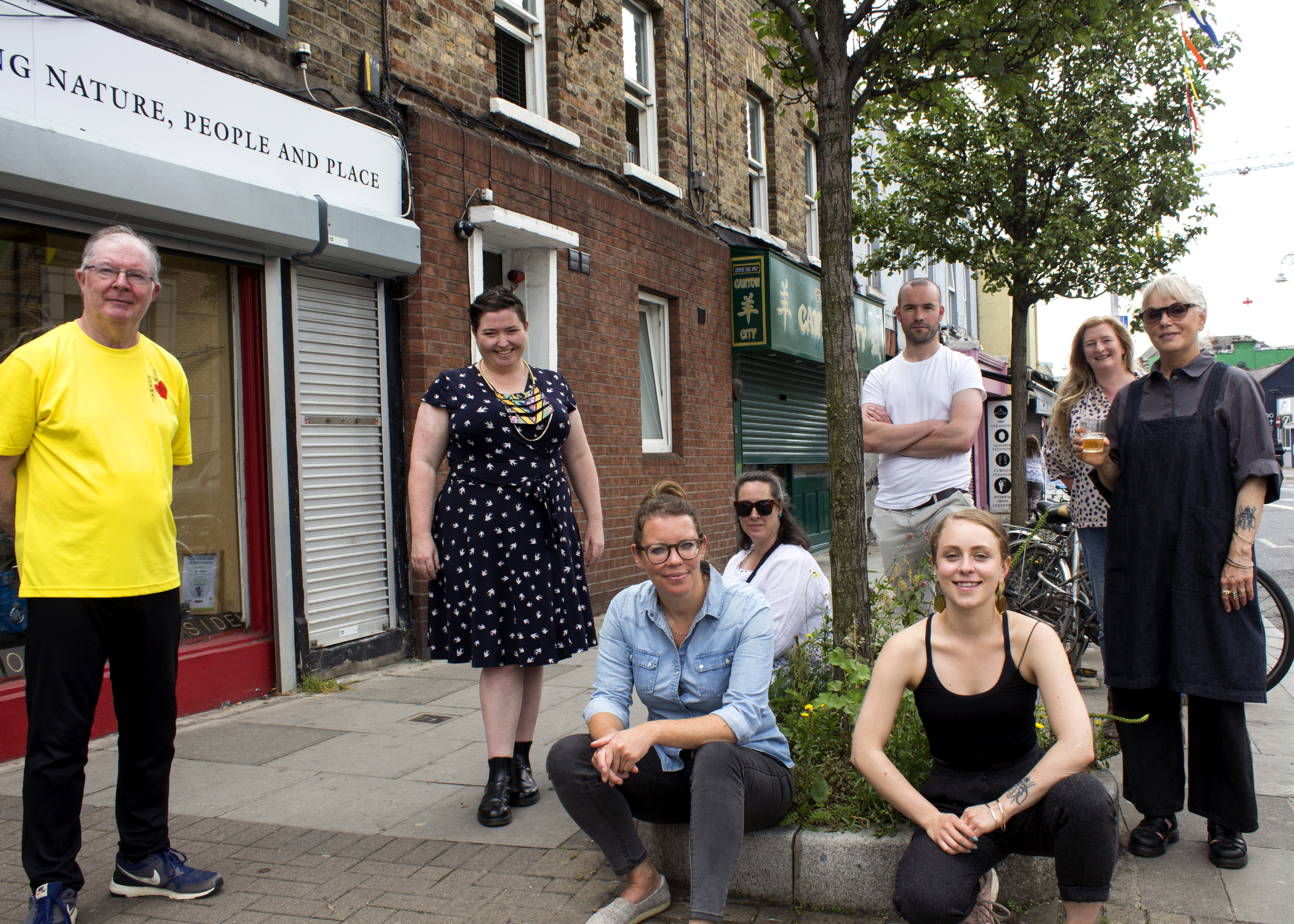Since the publication of the All-Ireland Pollinator Plan in 2015, we have been blown away by how local communities have embraced actions and have led the way in the fight for our biodiversity. It has been truly inspirational to witness all the pollinator-friendly actions by community volunteers, marked by All-Ireland Pollinator Plan signs in towns and villages everywhere – from reducing mowing, and letting Dandelions bloom to planting native hedgerows and community orchards.
Many of our partners, such as NIEA, Butterfly Conservation Northern Ireland, Buglife and Ulster Wildlife have worked hard to create awareness of the importance of pollinators among communities in Northern Ireland, while the Local Authorities Tidy Towns Pollinator Award has helped to focus the attention of upwards of 80% of all 918 TidyTowns groups on implementing actions for pollinators.
Many faith communities have adopted the pollinator guidelines to create safe spaces for biodiversity in churchyards and graveyards and religious properties across the island. The managers of Group Water Schemes came together to devise their own guidelines; while the community of the Belmullet in Co Mayo have adopted our most endangered bee, the Great Yellow Bumblebee, and are working hard to protect and encourage their remaining populations.
Monaghan Tidy Towns came up with an interested project they called the ‘Dispersed Urban Orchard’. They say through habitat mapping that their biodiversity-friendly sites were cut off from each other and they decided to do something about this – to create linkages between their existing pollinator-friendly habitats. The team took a high-definition aerial photograph of the town an overlaid it with all the habitats they had created or natural habitats they were protecting for pollinators. Then they began to look for routes that could be created between their top 10 sites in order to create ecological corridors. They discovered that there were lots of houses in between – with gardens. So, it was decided that the best approach was to try to create a large orchard but dispersed in people’s gardens!
They sourced lots of heritage variety fruit trees and advertised ‘Fruit Trees for a Fiver’. To avail of this bargain just had to provide your address and commit to planting the tree in your garden. The result? New vital connections creating links in a network of pollinator-friendly habitat throughout the town:
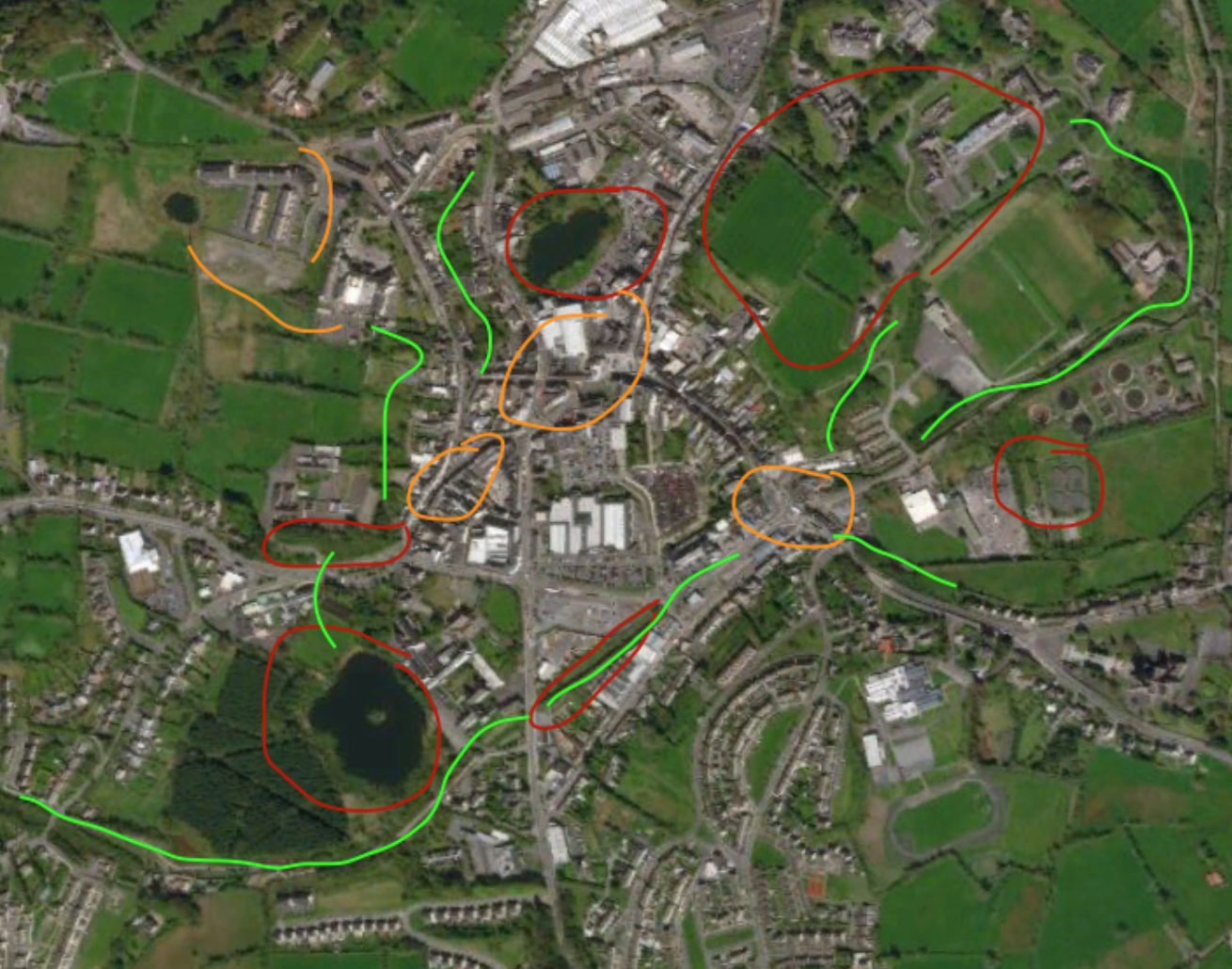 |
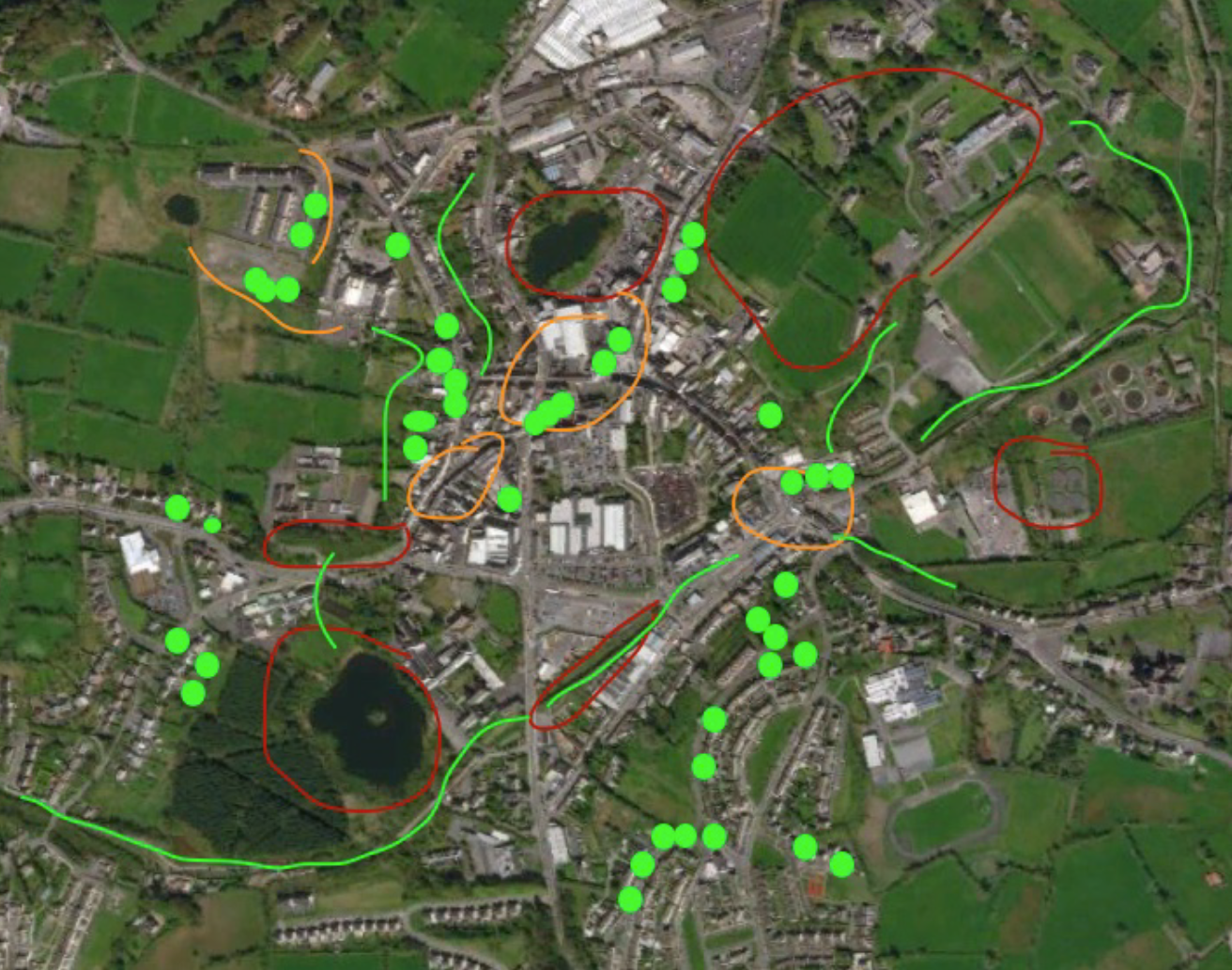 |
The green dots mark the new fruit trees planted in domestic gardens to help to join up pollinator-friendly habitat in Monaghan town.
To find out more about the Monaghan Urban Dispersed Orchard project, see https://pollinators.ie/monaghans-dispersed-urban-orchard-for-pollinators/
You can see what other community groups have been doing by exploring our mapping system, ‘Actions for Pollinators’ where over 1,000 pollinator-friendly sites have been logged: https://pollinators.biodiversityireland.ie/
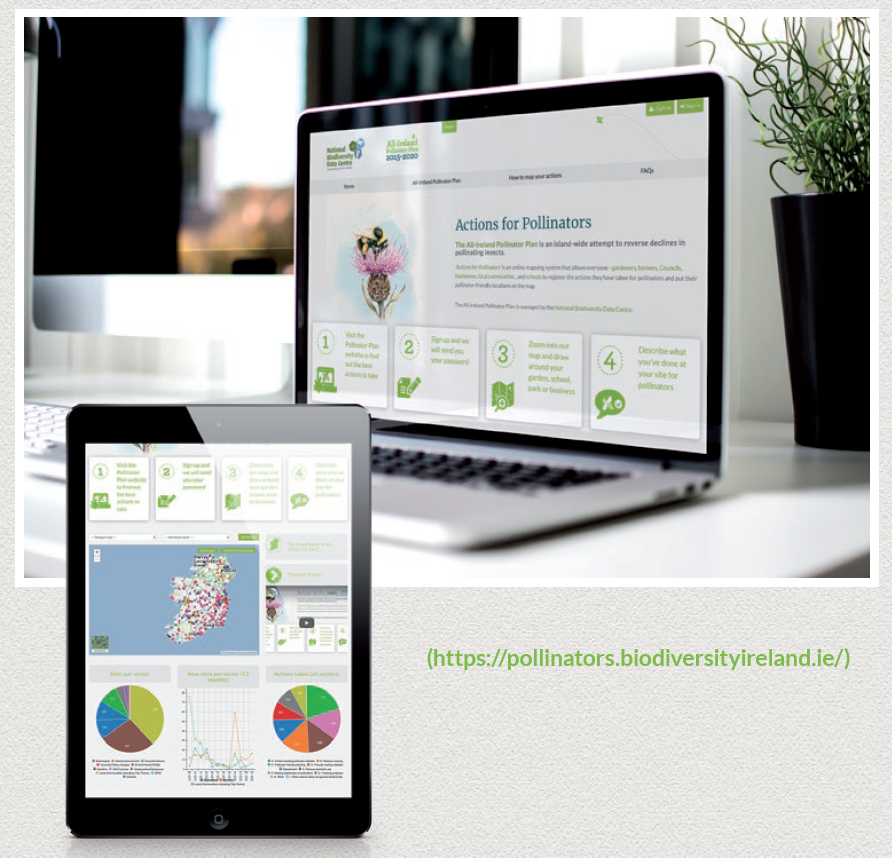 |
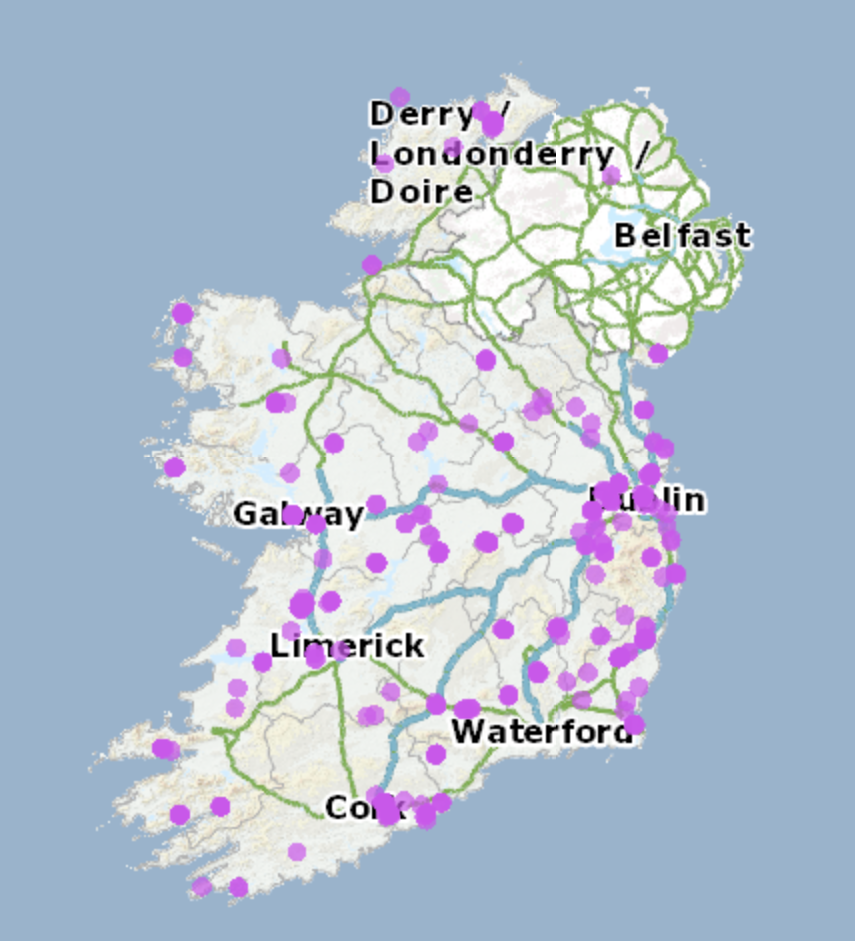 |
Stoneybatter – a pollinator-friendly community
Not only have community groups taken action themselves in their planting schemes and reducing mowing in housing estates, some, such as Stoneybatter in Dublin, have taken a holistic approach, bringing together many different sectors in their community, including local businesses, schools and private gardens. By connecting with all these sectors across their local area, the power of their actions are multiplied by the creation of ecological corridors through the community.
Just some of the volunteers helping pollinators in Stoneybatter, Dublin
There have been so many wonderful community projects, each improving and creating much-needed habitats for pollinating insects and biodiversity generally. We would like to sincerely thank all of these communities for all they are doing locally to help create more pollinator-friendly landscapes.
– Juanita Browne, All-Ireland Pollinator Plan Project Officer

